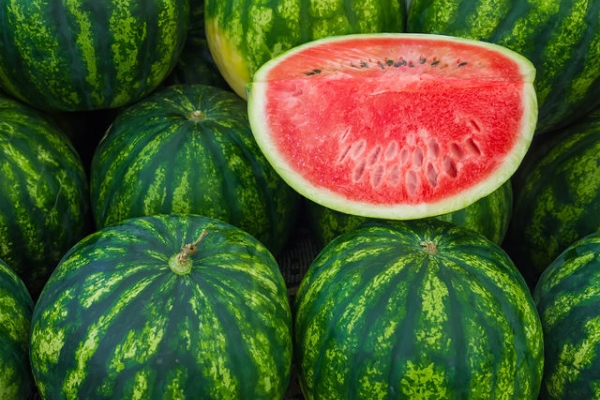We all love tasty and healthy food. Closer to August watermelons ripen, lovers of their bright taste and juicy sweet flesh again argue about this fruit belongs to berries or fruit? Or maybe to the vegetables? Let's figure it out.
Table of contents
Is watermelon a berry, fruit or vegetable?
Opinions are divided on this issue, even botanists have not yet reached a unanimous opinion. In everyday communication, it can be called a berry.Scientists tend to classify it as a pumpkin or classify it as a false berry.
In terms of botany, calling it a berry is rash.why:
- berries are consumed entirely, they do not need to be cut and eat in parts;
- berry stones are easily removed or digested;
- the berries have a thin peel.
If we consider the fruit as a garden fruit with juicy pulp, growing on a tree, then immediately it becomes clear that watermelon does not apply to fruit.
But if you omit the fact that it grows on bahche, in everyday communication it is acceptable to call it fruit.
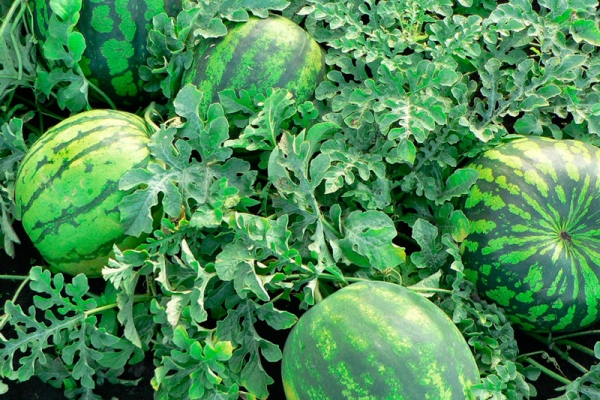
Where it grows and what it looks like, to which family it belongs
In Russia, large-scale cultivation occurs in the Volga region and in the Urals, but the Astrakhan Territory is considered to be truly the center of cultivation of this crop.
A habitual type of berry is its dark green color with light stripes.
Chemical composition, caloric content
Often it is included in the menu of diets, because it is more than 80% water. Office workers and people leading a sedentary lifestyle can afford a fairly large number of this fruit.
Its pulp contains from 27 to 38 calories per 100 grams.
It contains (nutritional value of 100 grams):
- proteins - 0.7 g;
- fats - 0.2 g;
- carbohydrates - 13 g (mostly fructose).
The pulp of the fruit is rich in vitamins:
- retinol;
- pectin;
- thiamine;
- folic acid;
- vitamin B9;
- potassium
Minerals:
- magnesium;
- phosphorus;
- iodine;
- fluorine and cobalt.
Berry giant watermelon:
Benefit
The rich composition has a beneficial effect on almost the entire human body. It can be eaten pregnant, as well as in diseases of the kidneys, intestines, cardiovascular system and anemia.
If after the holidays tormented by hangover, you need to try a little watermelon.
It is also used to improve the condition of the skin by adding pulp to various masks for the body and face.
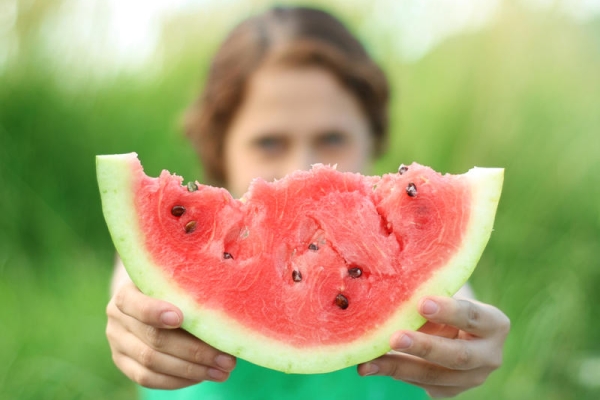
Harm
Naturally grown plants are very beneficial.. Unfortunately, they are often produced using nitrates, which accelerate growth.
A person with good health while eating such a fruit may not notice the negative impact.
A healthy body gradually accumulates harmful substances, which at any time can manifest as weakness, insomnia and nervous disorders. Immunity may deteriorate dramatically.
Small children should be given this treat with care., not earlier than a year.
It is necessary to do this gradually, you can pour the child squeezed out of a spoon in a spoon and monitor the condition of the baby, because it can cause allergies.
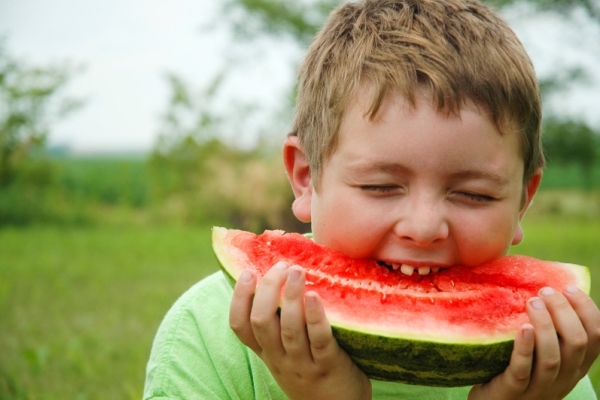
You can not eat the fruits of the plant, if you suffer:
- kidney impairment;
- diabetes;
- diseases of the gastrointestinal tract.
There are several ways to save from possible infections and poisoning:
- in no case acquire a pumpkin, having external violations - cracks and cuts;
- not to buy sliced pieces, even if they are packed in food film;
- thoroughly wash the acquired watermelons with soapy water, otherwise microorganisms may affect other products in the house;
- to make a purchase in the season of ripening late fruits and vegetables, starting in mid-August and ending in September.
Check the ripeness of watermelon can be by pressing on the fruit, if the crust is cracking - it's ripe.
About the benefits and dangers of false berries and the rules of its choice:
Recipes for dishes with this fruit
Fruit icecream
To get a popular delicacy, it is enough to have in the house sugar and fruit pulp in equal amounts.
Cooking:
- grind pulp and granulated sugar in a blender;
- poured into molds;
- we insert wooden or plastic sticks;
- leave in the refrigerator for 8-9 hours.
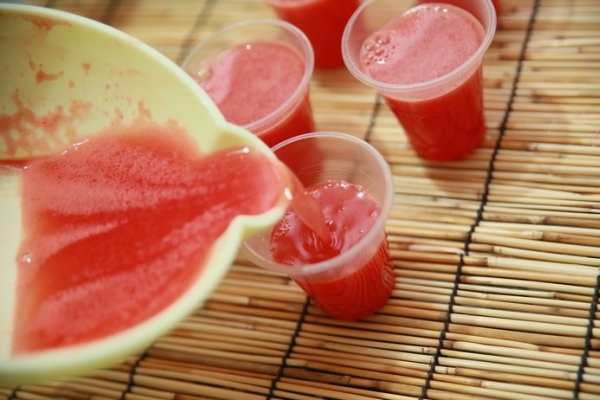
Watermelon and apple puree
To prepare this dish you need to take 6 kg of watermelon and 2 kg of apples.
Cooking:
- wash the fruits thoroughly;
- cut off the skin, remove the seeds, cut the flesh into pieces;
- we extract cores and hard parts from apples;
- we rub apples on a large grater;
- mix the ingredients in an enamel saucepan and set on fire;
- stirring constantly, bring the mixture to a boil;
- as soon as the noise began to form - turn off the stove and give the dish to cool;
- decomposed mashed potatoes in jars.
Why is so called and other interesting facts
The modern name "watermelon" was borrowed from the Turkish "χarbuz", and it, in turn, from the Persian language. In Persian, χarbūza means melon. The word melon was understood as "a huge cucumber."
Watermelons come in various shapes.: round, oval, spherical. If they are grown in a special form, they grow in the shape of a heart or even a human face, but require delicate care.
Nutritionists consider it possible to eat up to 2.5 kg of a fetus per day for a healthy person.
Contained in a false berry lipoken is an antioxidant. It helps the body to deal with various diseases. By consuming products containing it, you can prevent asthma or cancer.
Choline, which is part of the fetus, able to suppress chronic inflammation. Its use improves immunity and health.
Interesting facts about watermelon:
If we turn to the dictionaries, then we will see in them that watermelon is referred to as a perennial creeping plant of the pumpkin family or melon culture.
You can approach this issue scientifically and call the fruit a false berry.
In general, no matter how the product is named, it is only important what pleasure and benefit we will get by using it.
